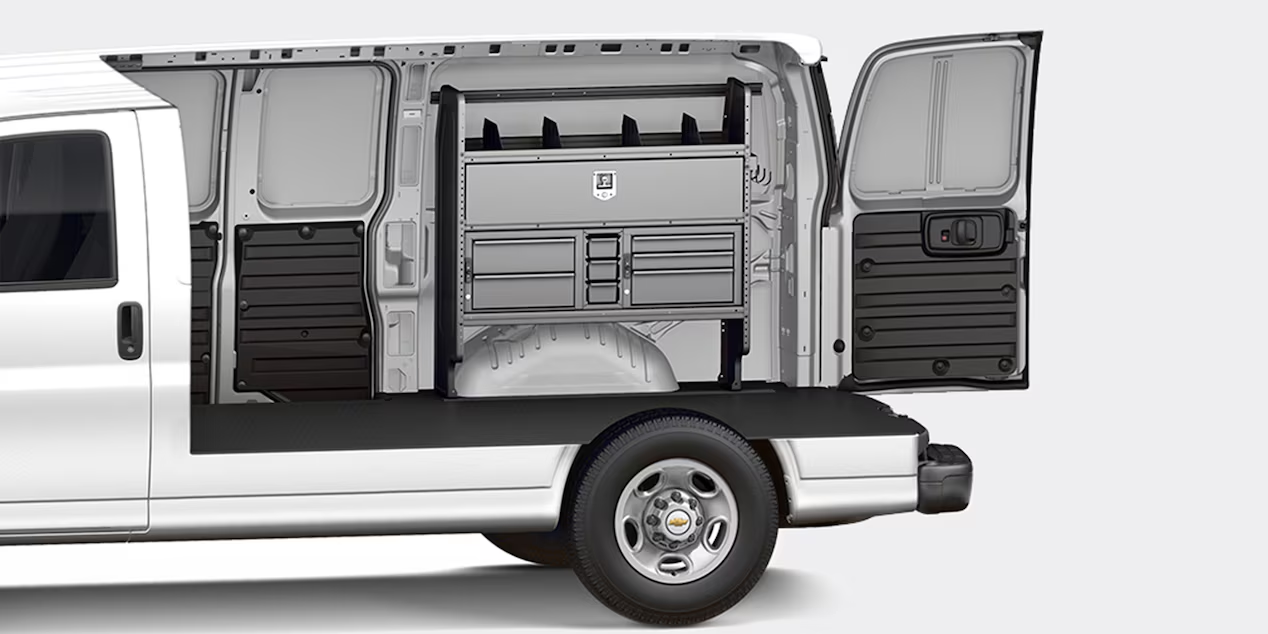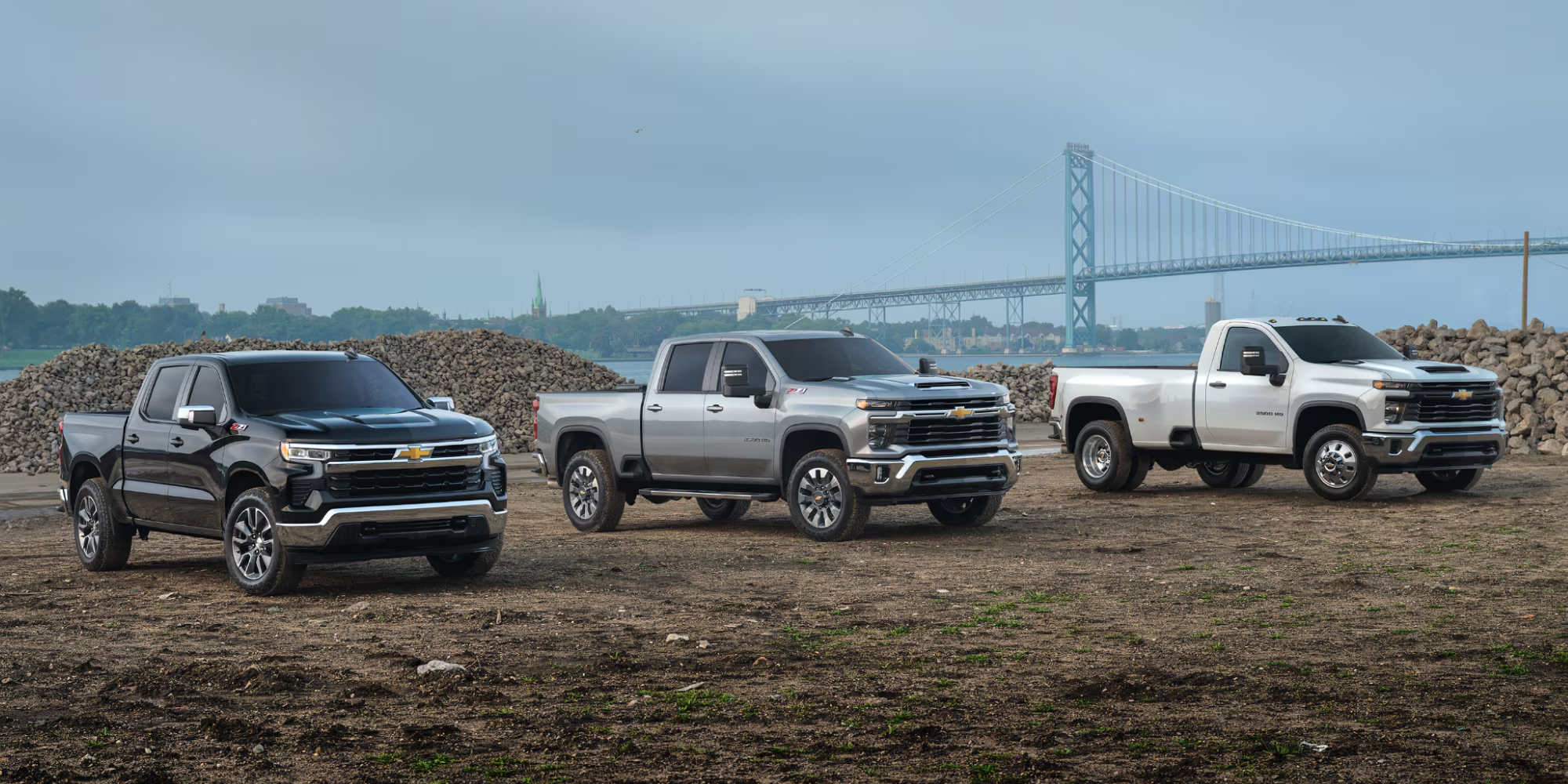Throughout the Years
From humble workhorses to modern powerhouses packed with cutting-edge technology, Chevrolet commercial vehicles have evolved in step with the needs of America’s workforce. Over the decades, Chevy has refined and redefined its commercial lineup to meet the ever-changing demands of small businesses, contractors, fleet operators, and municipalities.
At Kunes Commercial, we’ve had the privilege of watching this transformation firsthand—helping businesses across the Midwest harness the strength, durability, and innovation of Chevrolet vehicles. Whether you’re hauling heavy equipment, delivering goods, or building infrastructure, Chevy has built a vehicle for you. Let’s take a closer look at how Chevrolet commercial vehicles have changed through the years—and what that means for the modern working professional.
1940s–1950s: Foundation of Strength and Simplicity
Chevrolet’s roots in commercial transportation run deep. Post-World War II America saw a boom in manufacturing, construction, and agriculture. To keep up with growing demand, Chevrolet introduced work trucks that emphasized rugged utility above all else.
The Advance Design series, launched in 1947, became one of Chevy’s most iconic commercial lines. These trucks featured wider cabs, improved visibility, and increased payload capacity—significant upgrades from the pre-war models. Farmers, small business owners, and tradespeople embraced them for their reliability and simple design.
Though basic by today’s standards (manual transmissions, minimal cabin features, and no electronics to speak of), these trucks set the tone for what Chevrolet commercial vehicles would become: built to last, built to work.
1960s–1980s: Functionality Meets Versatility
As American industry expanded, so did the needs of commercial vehicle users. Chevrolet responded with vehicles that offered more choice, power, and refinement. The 1960s saw the continued success of the C/K pickup series, which offered various bed lengths, cab sizes, and powertrain options. These trucks laid the groundwork for what would eventually evolve into today’s Silverado lineup.
By the 1970s and 80s, Chevy was doubling down on commercial reliability. The introduction of the Chevy Van (G-Series) gave delivery drivers, service technicians, and fleet operators a versatile new platform. Later replaced by the Chevrolet Express Van in the 1990s, this style of vehicle became a mainstay for contractors and cargo transport.
Key milestones from this era:
- Introduction of heavy-duty variants like the C20 and C30 for increased payload and towing
- Widespread adoption of V8 engines for enhanced torque and hauling power
- More interior options for comfort on long workdays
- Introduction of diesel engines for fleet-focused applications
Chevy was no longer just offering trucks—they were offering purpose-built solutions for different industries.
1990s–2000s: Modernization and Powertrain Innovation
As the 20th century came to a close, Chevrolet began investing heavily in engine performance, safety, and specialized packages for commercial buyers.
The Chevrolet Silverado officially replaced the C/K series in 1999, launching what would become one of the most iconic and best-selling truck lines in America. With advanced powertrains, refined interiors, and multiple cab configurations, the Silverado offered more versatility than ever before.
Meanwhile, the Chevrolet Express Van became the go-to solution for cargo and passenger transport. Available in 1500, 2500, and 3500 series, the Express offered upfit flexibility, rear and side access configurations, and multiple engine options—including powerful Vortec V8s and diesel choices for heavy-duty applications.
Notable advancements during this time:
- Improved ride quality thanks to independent front suspensions
- Extended and crew cab options for businesses needing to transport teams
- Tow/haul mode and trailer sway control for safer load management
- Factory upfit programs, including ladder racks, shelving, and refrigeration packages
Chevy also began to roll out fleet-focused purchasing programs, making it easier for businesses to scale operations and maintain consistent service vehicles.
2010s: Smart Tech and Business Efficiency
The 2010s were a decade defined by two things: connectivity and efficiency. Chevrolet commercial vehicles embraced the future with a wave of technological improvements designed to make work easier, safer, and more efficient.
The Silverado HD (2500HD and 3500HD) was completely redesigned with stronger frames, greater payload and towing capacity, and advanced towing systems that included integrated trailer brake controllers, trailer sway control, and up to 15 camera views.
Chevrolet also introduced MyLink, the forerunner to today’s Infotainment 3 System, bringing features like:
- GPS navigation and route optimization
- Bluetooth and voice control for hands-free operation
- Smartphone integration with Apple CarPlay and Android Auto
- Real-time vehicle diagnostics and maintenance alerts
At the same time, the Express Van continued to serve a wide range of commercial purposes, especially in logistics, utilities, and trade work.
Fuel economy also became a growing concern, and Chevy responded with:
- EcoTec engines with better fuel management
- Diesel and turbocharged options for improved efficiency
- Cylinder deactivation on V8 engines to save fuel during light-load conditions

2020s and Beyond: The Electric and Autonomous Era
Chevrolet is leading the charge into the future with a bold new vision for commercial vehicles—one that includes electrification, automation, and connected fleet management.
Silverado EV: The Game Changer
The all-new Chevrolet Silverado EV, launching soon for fleet use, represents a complete rethink of what a work truck can be. Built on GM’s Ultium battery platform, the Silverado EV boasts:
- Over 400 miles of range
- Up to 10,000 pounds towing capacity, with even more in future versions
- Max Power Mode for serious torque on job sites
- Multi-Flex Tailgate and Midgate for ultimate cargo versatility
- Fast charging capability for on-the-go productivity
Electric commercial vehicles like the Silverado EV and the Chevrolet Bolt EV are ideal for companies with local delivery routes or municipal services looking to reduce emissions and fuel costs.
Tech that Transforms Operations
Today’s commercial vehicles are mobile offices, and Chevrolet equips them accordingly:
- Super Cruise (available on Silverado): hands-free highway driving
- Advanced trailering tech with onboard trailer diagnostics
- Fleet telematics and remote monitoring via GM’s Fleet Command platform
- Over-the-air updates to keep vehicles current without downtime
How Kunes Commercial Helps You Make the Right Choice
Navigating the evolving world of commercial vehicles can be overwhelming—but you don’t have to do it alone. At Kunes Commercial, our mission is to match you with the Chevy vehicle that fits your unique business needs—now and in the future.
Our services include:
- Fleet consultation for businesses of all sizes
- Factory upfit packages for trades, delivery, landscaping, and more
- Electric and hybrid vehicle planning for forward-thinking companies
- Onsite and mobile service options to keep your vehicles working
- Commercial leasing and financing with flexible terms
Whether you need one truck or a fleet of 50, we’re here to keep your business moving.
Final Thoughts: Tradition Meets Tomorrow
Chevrolet’s commercial lineup has transformed from tough tools of the past to the advanced, efficient, and sustainable workhorses of the future. Through every era, Chevy has responded to the needs of business owners—helping them adapt to new challenges and seize new opportunities.
At Kunes Commercial, we’re proud to offer these vehicles and support the businesses that rely on them every day. From plumbers and electricians to landscapers, delivery services, and municipalities—we’ve got your back.
Ready to find the right Chevrolet commercial vehicle for your business?
Visit Kunes Commercial or explore our inventory online to see how we can help drive your business forward.

